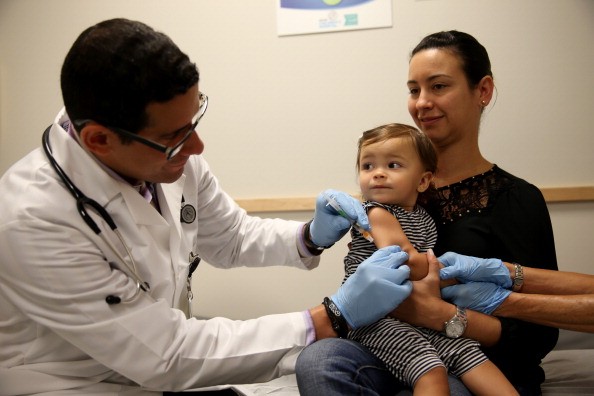
Most vaccines need to be administered with a needle and a syringe. Not even the biggest fan of vaccines thinks that getting a shot is pleasant. Now, researchers at the U.S. Centers for Disease Control and Prevention and the Georgia Institute of Technology are creating an easier way to administer the measles vaccine, a method that might be used in other vaccines as well.
The CDC and Georgia Tech are developing a microneedle patch that can administer the measles vaccine. The underside of the patch is surfaced with almost microscopic needles that are made of polymer, sugar, and vaccine. When the patch is pressed onto the skin, the microneedles press into the skin and dissolve within a few minutes. After a few minutes, the patch is discarded.
Tests done with rhesus macaques show that microneedle patches produce a strong immune response with no adverse reactions of health issues seen. Human clinical trials could begin as soon as 2017.
Unlike conventional measles vaccine, the microneedle patches do not need to be refrigerated and can be administered by a healthcare worker after a minimal amount of training. Because they do not use a needle and syringe, there is no need for specialized disposal and no risk of accidental needle sticks.
"With no needles, syringes, sterile water, or sharps disposals needed, the microneedle patch offers great hope of a new tool to reach the world's children faster, even in the most remote areas," said James Goodson, Ph.D., an epidemiologist with the CDC's Global Immunization Division. "This advancement would be a major boost in our efforts to eliminate this disease, with more vaccines administered and more lives saved at less cost."
The cost for a microneedle patch with measles vaccine is expected to be in line with the costs of injected measles vaccine and a needle and syringe.
The CDC and Georgia Tech are collaborating to see if microneedle patches can be use to administer other vaccines, including polio, flu, rotavirus, and tuberculosis.



